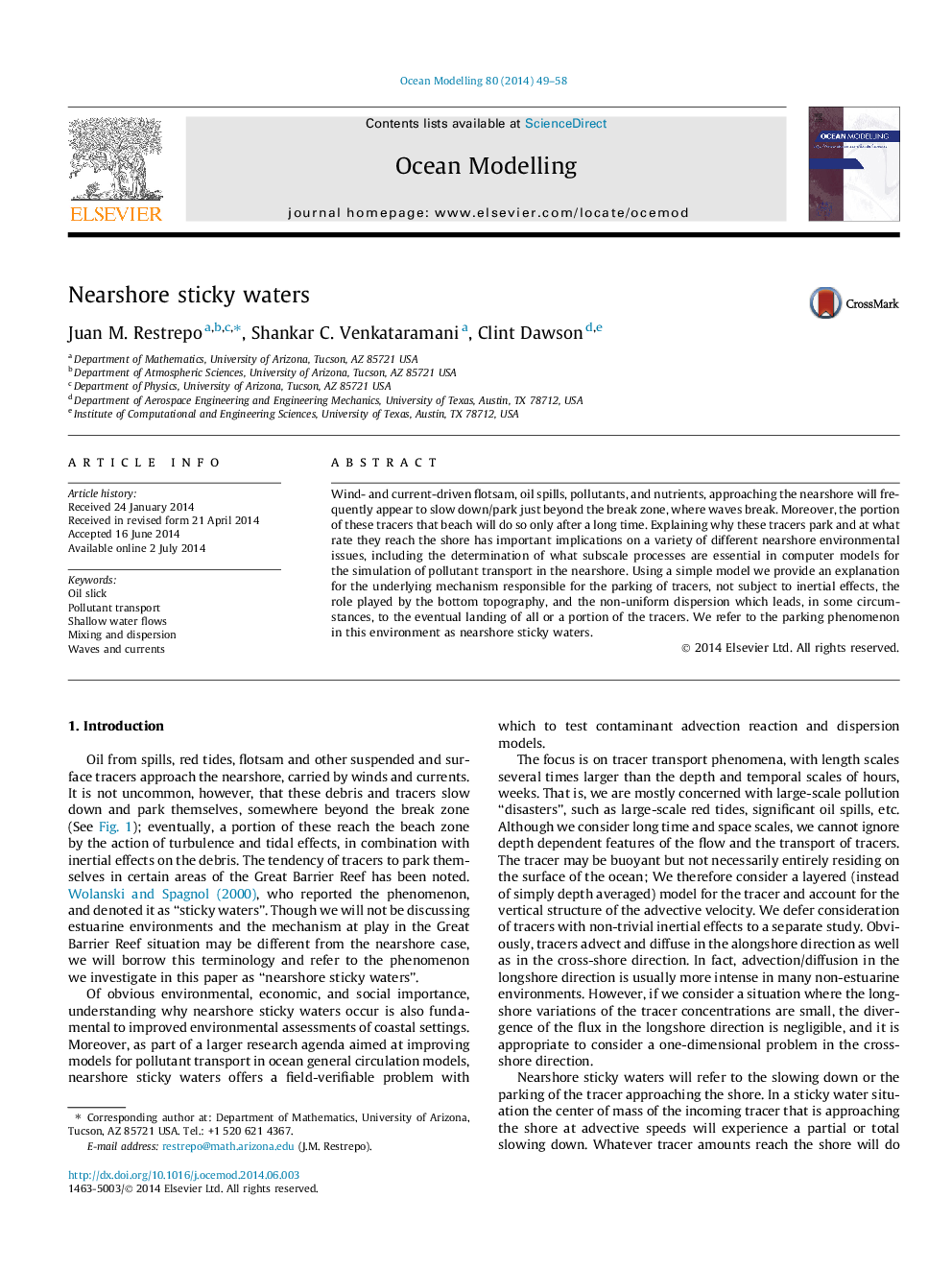| Article ID | Journal | Published Year | Pages | File Type |
|---|---|---|---|---|
| 6388167 | Ocean Modelling | 2014 | 10 Pages |
â¢We detail a mechanism whereby incoming pollutants stall in the nearshore.â¢We call this phenomenon “nearshore sticky waters.”â¢We provide the simplest possible explanation for the phenomenon.â¢The phenomenon has a bearing on pollution and environmental issues in the nearshore.â¢We develop criteria that determines the conditions necessary for nearshore sticky waters.
Wind- and current-driven flotsam, oil spills, pollutants, and nutrients, approaching the nearshore will frequently appear to slow down/park just beyond the break zone, where waves break. Moreover, the portion of these tracers that beach will do so only after a long time. Explaining why these tracers park and at what rate they reach the shore has important implications on a variety of different nearshore environmental issues, including the determination of what subscale processes are essential in computer models for the simulation of pollutant transport in the nearshore. Using a simple model we provide an explanation for the underlying mechanism responsible for the parking of tracers, not subject to inertial effects, the role played by the bottom topography, and the non-uniform dispersion which leads, in some circumstances, to the eventual landing of all or a portion of the tracers. We refer to the parking phenomenon in this environment as nearshore sticky waters.
